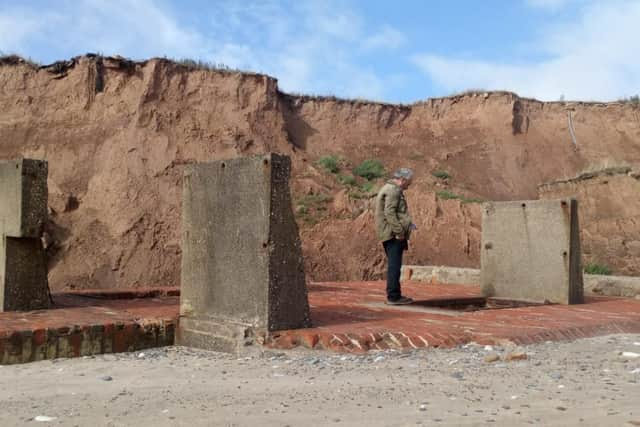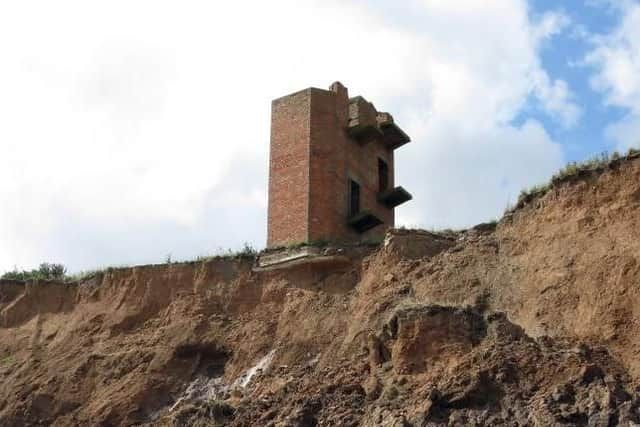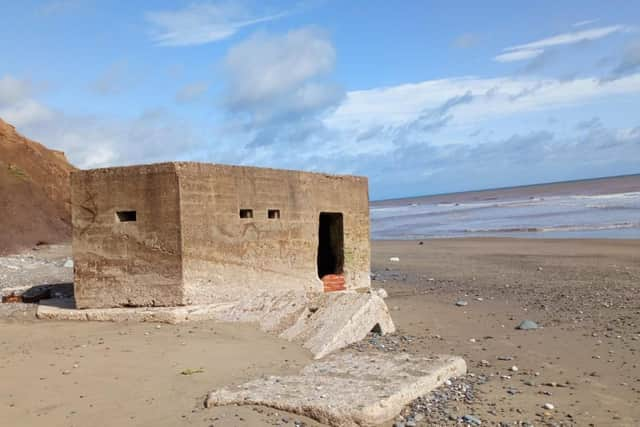WW2 military battery on Yorkshire beach finally buried by sand after nearly 80 years


But the World War 2 coastal artillery battery, built nearly eight decades ago as a counter-bombardment and close defence installation, has now finally almost been buried by the sand, after falling victim to coastal erosion.
When it was pictured in 2009 as part of a nationwide survey, the brick-built observation tower at Ringbrough, close to the village of Aldbrough in East Yorkshire, was precariously balanced on the edge of the cliff.
Advertisement
Hide AdAdvertisement
Hide AdNow a decade later it is at the bottom of the cliff on its side, nearly swallowed up by the sand.


According to the latest figures, coastal erosion eats up around 13ft of land a year on unprotected stretches of what is the UK’s fastest eroding coastline.
Roger Thomas, Assistant Listing Advisor for Historic England, said: "The erosion along this stretch of the Holderness coast is rapid and by examining a succession of aerial photographs, dating up to the present time, it is clear that it is speeding up.
Advertisement
Hide AdAdvertisement
Hide Ad"Since the Second World War, approximately 180m of ground has been lost to erosion."


Despite the remorseless advance of the sea there are still a few buildings at Ringborough dating from the wartime years.
In the farm complex there is a large reinforced concrete building which was the Battery Plotting Room, containing an early computer which worked out the future position of the enemy ships.
Even then they were amazingly accurate, being able to fire shells with an accuracy of 25 yards at 20 miles range.
Advertisement
Hide AdAdvertisement
Hide AdMr Thomas said: "Only four buildings remain out of the original complement of 25 wartime buildings on the main battery.


"The Battery Observation Post (BOP) tower, which originally stood approximately 115m inland from the cliff edge in 1946, collapsed down the cliff in 2010 and now lies on its side on the foreshore below the high tide mark, and the eroded and fragmentary remains of three gun emplacements are close to the low-tide mark.
"The four buildings that survive include a ‘lozenge’ pillbox, the Battery Plotting Room, the combined Blacksmith’s Shop, Workshop and Royal Artillery Store, and the Gun Store."
The battery was more than 300ft from the edge when it was built in 1941 to stop shells being fired from enemy ships at Hull. But it went up too late to serve its real purpose.
Advertisement
Hide AdAdvertisement
Hide AdA second line of heavy anti-aircraft guns – long since lost to the North Sea – was then built in front of them to act as a defence against feared V1 “Doodlebugs”.
A few minutes' walk down the beach is another WW2 remnant - a pillbox - one of a series of small fortified structures built along the coast as a part of British anti-invasion preparations.